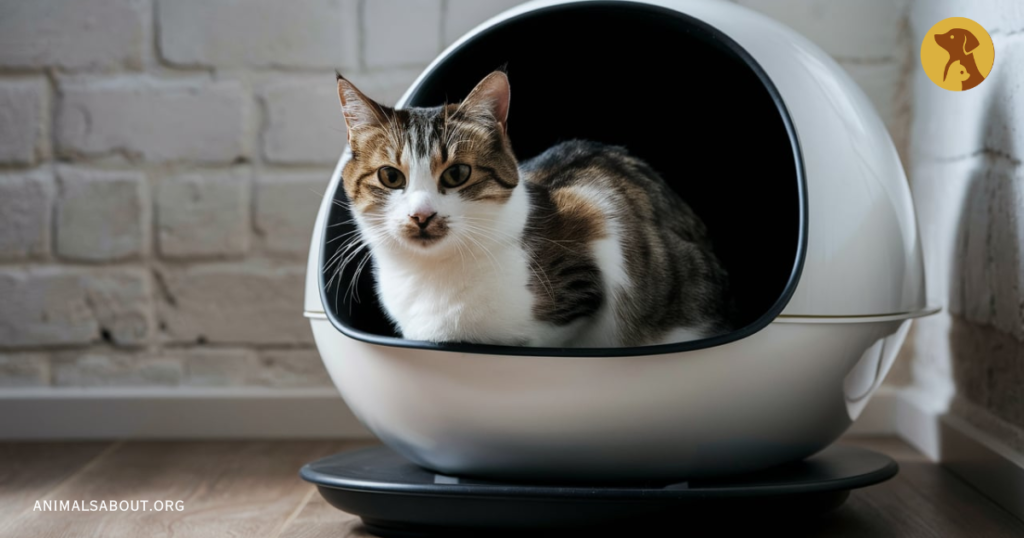Bringing a cat into your home fills your life with purrs and cuddles, but train cat litter box success is a must for a happy household. Whether you’re guiding a curious kitten or helping an adult cat settle in, litter training can be straightforward with the right approach. At animlasabout.org, we’re passionate about helping animal lovers like you make litter training for kittens or adult cats simple and stress-free. In this expanded guide, we’ll dive deeper into how to train cat litter box habits with practical, heartfelt tips that tap into your cat’s natural instincts. Let’s create a clean, joyful routine for you and your feline friend!
Why Learning to Train Cat Litter Box Matters
Cats are wired to be clean, often seeking out sandy spots to do their business. But how to litter train a cat isn’t always automatic; it takes a little human help to get it right. Mastering cat toilet training keeps your home fresh, reduces stress for your cat, and strengthens your bond. When you train cat litter box habits early, you prevent cat litter box problems like accidents or anxiety. Plus, understanding feline litter habits makes you a more confident pet parent, ready to tackle any challenge with love.
Step-by-Step Guide to Train Cat Litter Box
Ready to train a cat litter box like a pro? Here’s a detailed roadmap packed with tips to make teaching cat bathroom habits feel natural and fun.
1. Pick the Perfect Litter Box
The foundation of best litter box training method success is a box your cat feels comfortable using. A mismatch can lead to cats won’t use litter box moments, so let’s get it right.
- Size it up: The box should be 1.5 times your cat’s length so they can move freely. For training a kitten to poop in a litter box, choose a low-sided box for easy access.
- Covered or open? Covered boxes offer privacy, but some cats feel trapped. Open boxes are great for introducing letters to a new kitten because they’re less intimidating.
- Explore types of litter boxes: From budget-friendly trays to high-tech self-cleaning models, pick one that suits your cat’s personality and your lifestyle.
Animal Lover Story: When I adopted my cat, Max, he ignored his fancy covered box. Switching to a simple, open tray turned him into a litter box champ overnight!
2. Choose Cat-Friendly Litter
Litter choice is a big deal when you train cat litter box habits. Cats are picky about texture and smell, so finding the right one encourages consistent use.
- Clumping for convenience: Most cats love the soft, diggable feel of clumping litter, and it’s easier to scoop.
- Unscented wins: Strong scents can overwhelm a cat’s sensitive nose, so stick to unscented for how to get the cat to use litter box success.
- Eco-friendly options: Try natural litters like corn or walnut if your cat has allergies or you want a greener choice.
Pro Tip: If your cat avoids the box, experiment with different litters. Place a few types side by side to see which one they gravitate toward during cat behavior training.
3. Nail the Litter Box Placement
Where you put the box can make or break your efforts to train cat litter box routines. Cats need a spot that feels safe and inviting.
- Quiet corners: Choose a low-traffic area, away from noisy appliances like washing machines. A peaceful vibe supports indoor cat training.
- Easy access: Make sure kittens or older cats can reach the box without climbing stairs or navigating obstacles.
- Keep it separate: Never place the box near food or water bowls cats like to keep their bathroom and kitchen distinct.
Common Litter Training Mistake: Moving the box frequently confused cats. Once you train cat litter box habits, stick to one spot to maintain their litter box routine.
4. Introduce the Box with Care
Whether you’re training a kitten to poop in a litter box or guiding an adult cat, a gentle introduction sets the tone for success.
- Timing is everything: Place your cat in the box after meals, naps, or play sessions when they’re likely to go. This taps into their natural rhythm.
- Let them explore: Cats instinctively dig in loose material. If they start pawing, resist the urge to guide their paws just let them figure it out.
- Positive reinforcement cat training: When they use the box, offer praise, a pet, or a tiny treat. This builds confidence and reinforces teaching cat bathroom habits.
Real-Life Tip: My kitten, Bella, was shy about her box at first. I sat nearby, speaking softly while she explored, and soon she was using it like a pro. Patience is key to train cat litter box success!
5. Keep the Box Spotless
A clean box is non-negotiable if you want to train cat litter box habits that stick. Cats avoid dirty boxes, which can lead to accidents.
- Daily scooping: Remove clumps and solids at least once a day to keep it inviting.
- Weekly refresh: Add fresh litter as needed and replace it entirely every 1-2 weeks, depending on use.
- Monthly deep clean: Wash the box with mild, unscented soap and water to eliminate odors without harsh chemicals.
Cleaning the litter box shows your cat you respect their space, making them more likely to embrace their feline litter habits.
6. Spot the Signs of Success
Wondering if your efforts to train cat litter boxes are paying off? Watch for these signs your cat is litter trained:
- They head to the box on their own, even when you’re not around.
- No accidents outside the box for a week or more.
- They dig, do their business, and cover it up consistently.
When you see these behaviors, give yourself a pat on the back you’ve nailed how to litter train a cat!
Troubleshooting When You Can’t Train Cat Litter Box
Even with the best plans, hiccups happen. Here’s how to tackle common litter training mistakes and get back on track.
- Cats won’t use litter boxes? Rule out health issues first. Urinary tract infections or digestive problems can cause avoidance. A vet visit is a must if accidents continue.
- Kitten struggling? Litter training for kittens takes time, sometimes weeks. Try a different litter texture or move the box to a quieter spot.
- Sudden refusal? Stress from a new pet, a move, or loud noises can disrupt feline litter habits. Reintroduce the box calmly and add comforting items like a favorite blanket nearby.
Animal Lover Insight: My friend Jake’s cat, Whiskers, stopped using the box after a noisy renovation. By creating a cozy corner with the box and some toys, Jake helped Whiskers feel safe again. Sometimes, a little TLC is all it takes to train cat litter box habits.
Advanced Tips to Train Cat Litter Box Like a Pro
Want to take your cat toilet training to the next level? These extra strategies will solidify your success.
- Multiple boxes for multiple cats: If you have more than one cat, provide one box per cat plus an extra. This prevents territorial disputes and supports indoor cat training.
- Transition slowly: If you’re switching litter types or box styles, mix the new with the old gradually to avoid shocking your cat.
- Monitor behavior: Cats are subtle. If they hesitate near the box or sniff excessively, it might signal discomfort with the setup or a health issue.
Fun Fact: Some cats can even learn to use a human toilet with advanced cat behavior training! While it’s not for everyone, it shows how adaptable cats can be when you train cat litter box habits with patience.
Myths About Trying to Train Cat Litter Box
Let’s bust some myths that might confuse animal lovers trying to train cat litter box routines:
- Myth: Cats always know how to use a litter box instinctively.
Truth: While most cats have the instinct, how to get a cat to use the litter box often requires guidance, especially for kittens or stressed adults. - Myth: Punishment helps training.
Truth: Scolding scares cats and can make them avoid the box. Stick to positive reinforcement cat training for better results. - Myth: One box fits all households.
Truth: Every cat is unique. Experiment with types of litter boxes and setups to find what works.
Your Cat’s Personality and Litter Training
Every cat brings their own quirks to train cat litter box efforts. A shy cat might need a secluded box, while a bold one might not care about placement. Pay attention to their body language, tail flicks, hesitant steps, or relaxed digging can tell you what’s working. By tailoring your approach to their personality, you’ll make teaching cat bathroom habits feel like a team effort.
Heartfelt Note: My tabby, Oliver, took weeks to trust his box because he’s so cautious. Watching him finally strut to it with confidence was a proud moment. Your cat’s unique journey to train cat litter box success will be just as special.
Wrapping Up: Train Cat Litter Box with Love
To train cat litter box habits is to build a foundation of trust and comfort for your cat. By choosing the right box, keeping it clean, and using positive reinforcement cat training, you’ll create a routine that’s easy for both of you. Whether you’re introducing a letter to a new kitten or helping an adult cat adjust, these tips rooted in understanding feline litter habits will guide you to success. Stay patient, stay kind, and celebrate every step forward.
Got a litter training win to share? Drop it in the comments on animlasabout.org or connect with our community of animal lovers! If challenges pop up, don’t hesitate to consult a vet or ask fellow pet parents for advice. Together, we can train cat litter box habits that make life better for every cat.







